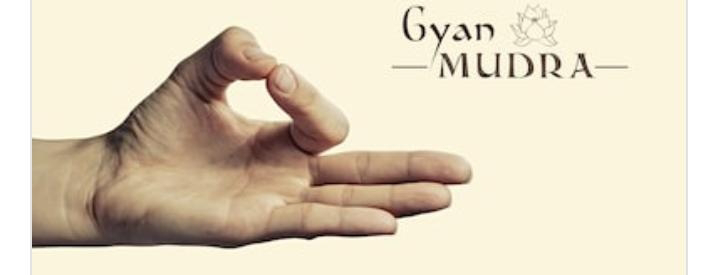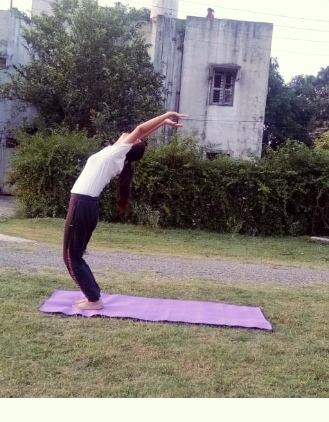5 hasta mudras (hand gestures)
There are so many kinds of hasta mudras but in this article iam explaing 5 meditative Hasta Mudras along with their benefits.
The 5 hasta mudras (hand gestures)
1. Jnana mudra (pyschic gesture of knowledge).
2. Chin Mudra (psychic gesture of consciousness).
3. Yoni Mudra (attitude of the womb or source)
4. Bhairava Mudra (fierce or terrifying attitude)
5. Hridaya Mudra (heart gesture).
Scientific facts behind making hasta mudras
Each finger represents one of the 5 elements when activated helps to keep the body and mind in balance.
The index finger represents air element which helps to reduce the excess air in the body
thumb represents fire element which increases the heat reducing the toxins.
The middle finger represents space that helps with the supply of oxygen to the heart.
The ring finger represents Earth element that helps to strengthen the muscles of the heart.
When pressed increases the respective elements thereby bringing balance to all the elements.
The palms and the fingers have many nerve root endings which constantly emit energy. When the index finger touches the thumb, a circuit is produced which allows the energy to travel back through the body upto the brain which would normally dissipate into the environment.
When the fingers and hands are placed on the knees, the knees are sensitised and stimulates a nadi known as Gupta nadi or hidden nadi which run from the knees, up the inside of the thighs and into the perineum.
1. Jnana mudra (pyschic gesture of knowledge).
The Jnana Mudra also know as Gyan Mudra. The word jnana means wisdom or knowledge and thus jnana mudra is the gesture of intuitive knowledge.
Relax the hands and arms.
Benefits:
✓It stimulates the root chakra
✓It eases tension and depression.
✓It relates to expansion and knowledge.
✓It is extremely calming and brings the practitioner spiritual openness.
✓It stimulates the brain empowering the mind.
✓It empowers the nervous system and pituitary gland.
✓It can help enhance concentration and prevent insomnia.
2. Chin Mudra (psychic gesture of consciousness).
The Jnana mudra and chin mudra are simple but important, the pyscho-neural finger locks make meditation asanas more powerful.
Chin Mudra is performed the same way as Jnana mudra, except that the palms of both hands face upwards, with the backs of the hands resting on the knees.
In this mudra the index finger represents individual consciousness and the thumb represents universal consciousness. The index finger represents the limited perspective of self and the thumb is the expanded perspective of Self. When the two join, the limited self is connected to the spacious Universal Self.
Benefits of chin mudra
✓connects us to our higher Self.
✓It lifts dull energy
✓It opens up the chest area.
✓It calms the mind
✓It brightens the overall mood
✓A sense of lightness and receptivity is experienced.
3. Yoni Mudra (attitude of the womb or source)
The word Yoni means womb or source. Yoni mudra,a representative of Shakti, the feminine power invokes the primal energy inherent in the womb or source of creation.
Benefits
✓For a woman, this kind of yoga posture is extremely helpful in dealing with everyday stress.
✓his mudra helps achieving the same tranquillity of mind that an unborn child feels when it is inside the womb.
✓this mudra helps to improve fertility.
✓ Yoni Mudra helps to calm the mind by silencing the constant worrisome chatter in the head.
✓it is the withdrawal of the senses that allows you to grab that much-needed pause.
✓it helps gain clarity and harmony of thoughts.
✓it soothes your restlessness.
✓Since pranic energy is believed to exist in the hands, this position is said to seal energy and stimulate the nerves.
4. Bhairava Mudra (fierce or terrifying attitude)
Place your right hand at the top of left one.
Bhairava actually means fearsome. Lord Shiva in fearsome form is called Bhairava. This also depicts the immense strength and power of the lord. Its fierce nature is also said to be a destroyer of one’s egoism.
Benefits
✓brings balance between the right and left hemispheres of the brain
✓Instills stability
✓Remedy for those suffering from anxiety, stress and mood swings
✓When in combination with Siddhasana, it sublimates sexual energy, awakens it in a new state of awakening Kundalini energy. Siddhasana directs the prana energy to the sushumna i.e. spinal column and is also an ideal asana which helps in brahmacharya i.e. celibacy. These two form ideal combination and benefits.
5. Hridaya Mudra (heart gesture).
The heart being the most important organ in the human body as it is the centre of emotions, needs to be stimulated with the practice of asanas, pranayama, meditation and mudras.
Benefits :
✓This mudra helps to redirect prana towards the heart, thereby controlling any problems related to the heart.
✓Along with the physical benefits, at the emotional level too this mudra opens the heart balancing the emotions and tensions.
✓It's practice brings a cooling and calming effect on the nervous system, hence good for people dealing with insomnia.
✓ Migraine, Blood Pressure, and Asthma can also be cured.
✓Hridaya Mudra also called as Apan Vayu Mudra is said to help reduce any pain in the body and is also beneficial for those suffering from arthritis.
✓it may be practiced during emotional conflict and crisis as it helps to release pent-up emotions and unburden the heart.
This was all about the hasta mudras. Keep reading my articles and also follow my page on Facebook as well as Instagram @timetocure for Yoga, health, diet tips, treatment and acupressure related videos and stuff.
Shruti
Yoga Instructor
Acupressure Therapist
@timetocure









Comments